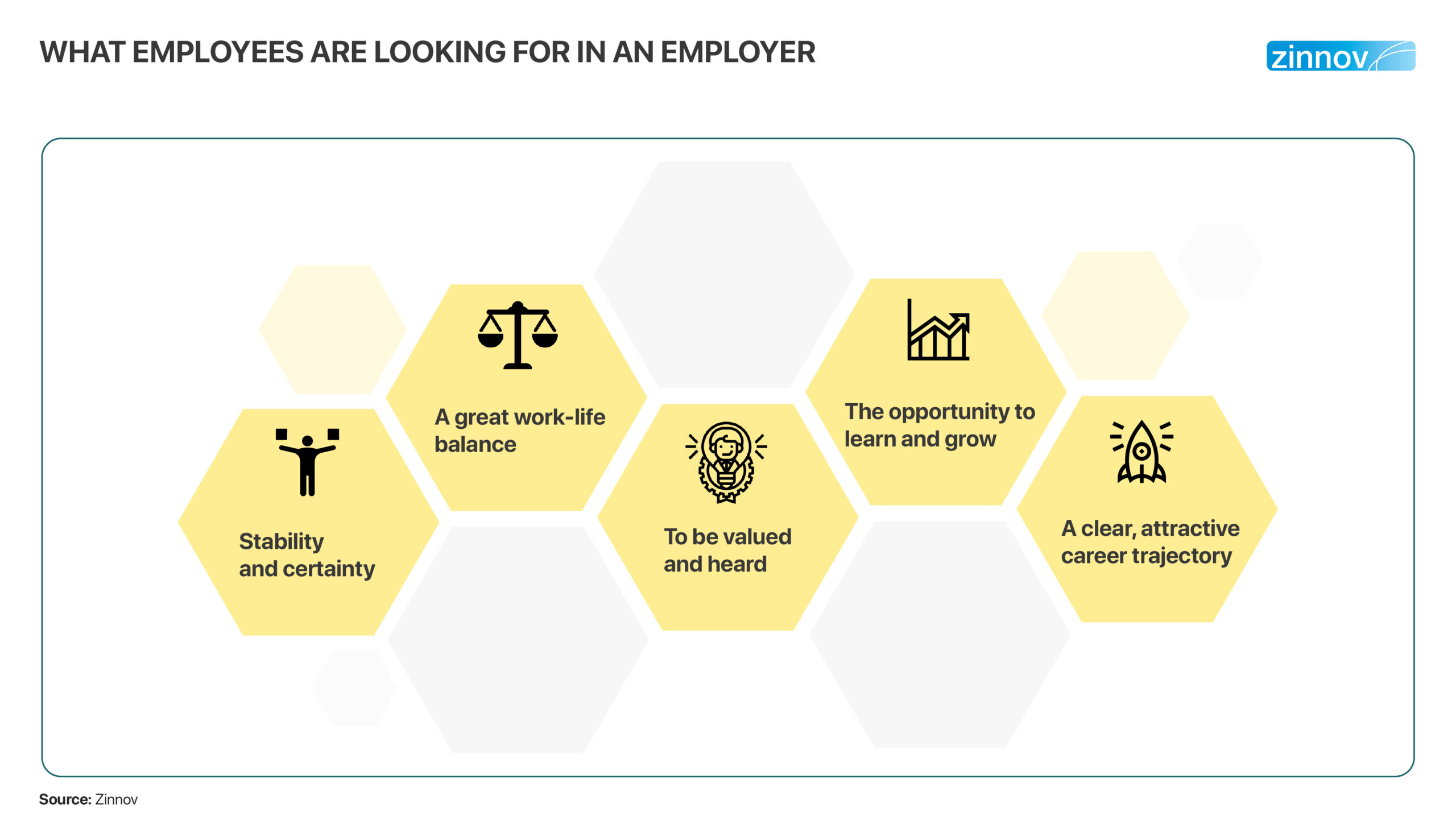|
|
Rakhi Deshpande, Director — Talent Acquisition, Zinnov; Lahari K.V., Marketing & Communications, Zinnov

The word ‘war’ conjures up images of lack of resources and feelings of anxiety and unpredictability. The proverbial Talent War or ‘The Great Resignation’ that has reached a fever pitch in the wake of the pandemic has done the very same thing – creating cut-throat competition between companies vying for the best talent. The past one year has dramatically changed the way companies find, hire, and interact with talent. With the changes wrought by the pandemic in the job market and the accelerated digital transformation underway across companies, the story no longer revolves solely around what value an employee can bring to an organization. Today’s employees are informed and evolved job consumers and are important consumers of any company’s brand.
Any employee with relevant qualifications and experience has a bouquet of job offers to choose from, as evidenced on LinkedIn these days. With the rise in job consumerism and a greater demand for skilled talent, it becomes crucial for recruiters to ensure that the soldiers they are recruiting can be satisfied, motivated, and believe in a single vision. It is no longer sufficient to merely devise strategies to attract top talent, but companies also need to manage evolving employee expectations and retain that talent if they are to survive the ongoing talent wars. Additionally, since the pandemic and the resultant market disruptions were unanticipated and unpredicted by companies, talent experts concur that most organizations are not appropriately responding to the changes in the market, but are merely reacting to it.
Here are three common yet inadequately addressed mistakes that companies make while trying to hire and retain top talent, and the best practices that can help leaders strategize better.

Everybody can admit that a virtual setting can be a little confusing and daunting for people initially, especially employees who are new to an organization. And creating a sense of belonging virtually can be hard with no office environment to facilitate organic conversations, rapport building initiatives, or team building activities. Without the sense of community and belonging, the cost of a job change is next to nothing – a job change may mean nothing more than a laptop change.
Moreover, a serious lack of agility has become the norm in way too many workplaces. Every new challenging situation demands customized, meaningful methods of management – much like during an actual war. Company policies may not align with the current global situation. For example, news headlines are still predominantly about how companies handled the COVID-19 crisis; not how they helped their employees through the situation – emphasis on the business, but not on the people.
This is where the HR and Talent Acquisition teams – frontline generals, so to speak – need to step in and zero in on factors that make the company stand out. They will need to create an experience so unique for the employees, that they anchor with the organization as a brand. The company culture needs to be redefined and updated to accommodate new trends and solve new challenges efficiently. Take Inclusion & Diversity drives, for example. Establishing a culture within the company that celebrates differences and encourages people to show up as they are, will need to be rethought through for a remote/hybrid setting. This is essential for people to feel valued and heard when they can interact as their whole, uncensored selves at their workplaces – no matter if it’s remote or in a hybrid scenario.
The job of building a solid employer brand does not end with building meaningful connections. It is important to delve deep and understand what exactly it is that employees are looking for in a job.
Do employees really want the over-the-top perks that companies offer? While they may be useful in the short run to retain talent, they cannot be a long-term, sustainable solution. Such incentives only serve as stop-gap solutions to saving businesses, not building them to last. Hence, it is essential to identify what today’s workforce really wants and formulate more far-sighted, inclusive, and sustainable strategies.
Stability is one of the foremost factors that help people stick to an organization. While creating a differentiated employer brand for a company, it is important to let people know that the organization knows what it is doing, and that the employees will not be left high and dry when things get rough again. The crux of the matter is this – give your soldiers a good reason to join forces and fight alongside you.
Top performing employees are ambitious and want to be given the opportunity to grow – a promising career trajectory is another great way to lower attrition rates. As the conversations have evolved from being company-centric to employee-centric, companies need to make sure they offer long-term benefits and opportunities for all their employees, across job roles and levels.
In times of crisis, such as the ongoing pandemic, it is but natural for employees to feel overwhelmed and confused. Here, leaders will need to play an important role – beyond that of the HR – to reclaim employees and help them through the trying times. Although the virtual setting has made interactions understandably more complicated, and demand more personal commitment, it is not entirely impossible.
As Napoleon Bonaparte once said, “A leader is a dealer in hope.” Every leader – from the senior-most ones to mid-level managers and project leads need to have a solid individual brand that keeps their team engaged and satisfied. In a sense, every leader needs to function like a start-up founder – being visible, aspirational and collaborating with HR to create employee experiences that are personalized and tailored to suit the individual life stages of employees.
A popular saying goes, “An employer gets the employees they deserve.” This truism captures the essence of the talent wars and the future beyond ‘The Great Resignation’ – the company is responsible for the work culture and ethics it fosters. Skilled talent is not just a component but the core of a sustainable business. And the power to win over employees and win this metaphorical war is in the hands of its decision makers. A combination of right strategies, flexibility, and empathy can go a long way in creating the desired value for any organization.